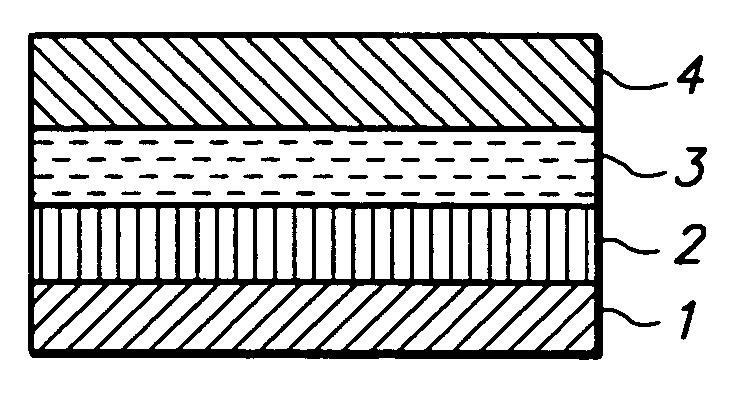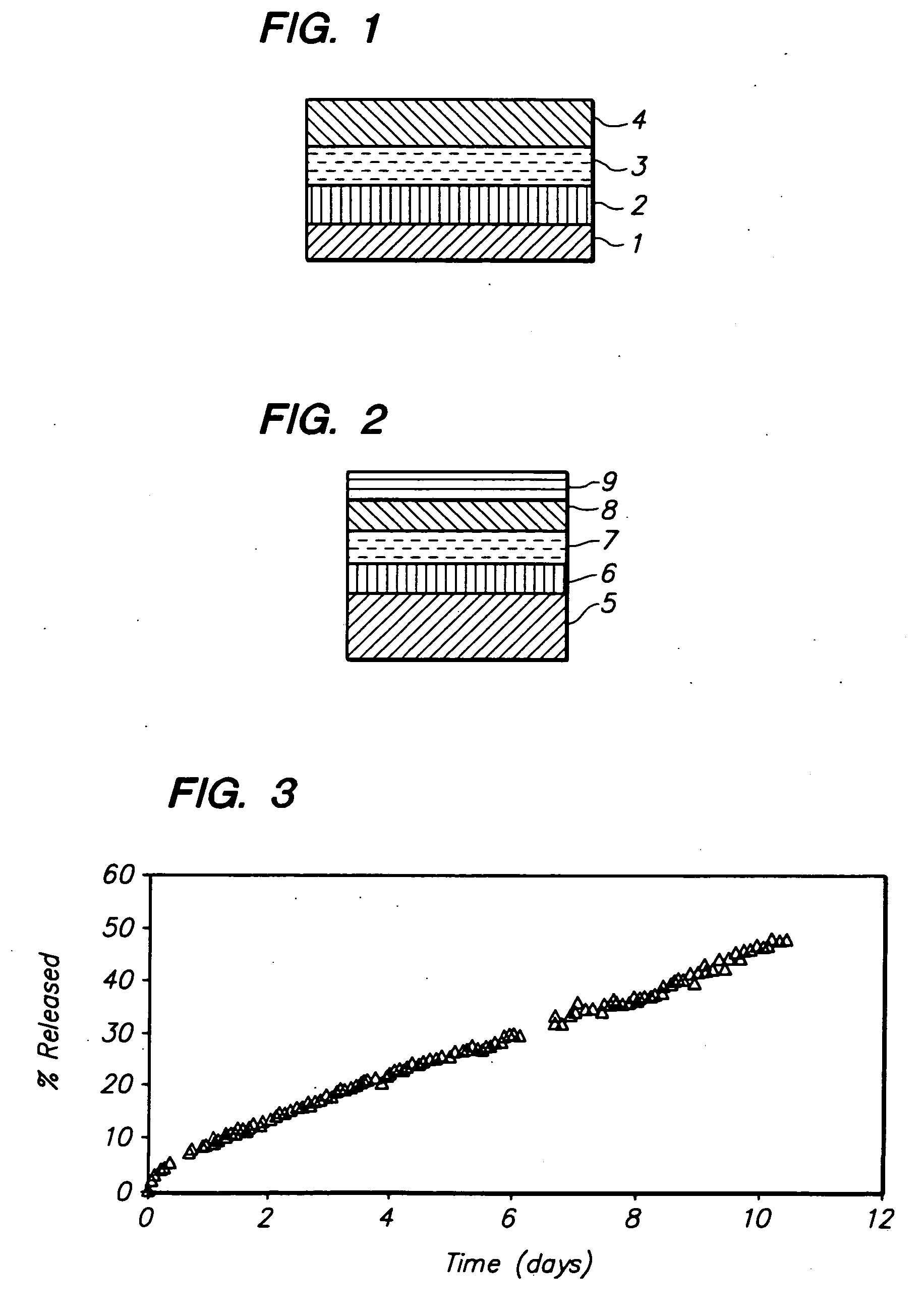Rate limiting barriers for implantable devices and methods for fabrication thereof
- Summary
- Abstract
- Description
- Claims
- Application Information
AI Technical Summary
Benefits of technology
Problems solved by technology
Method used
Image
Examples
example 1
[0049] A first composition was prepared by mixing the following components:
[0050] (a) about 2.0 mass % of EVAL; and
[0051] (b) the balance, DMAC solvent.
[0052] EVAL has the general formula —[CH2—CH2]m—[CH2—CH(OH)]n—. EVAL is a product of hydrolysis of ethylene-vinyl acetate copolymers and may also be a terpolymer including up to 5 molar % of units derived from styrene, propylene and other suitable unsaturated monomers. The first composition was applied onto the surface of a bare 12 mm TETRA stent by spraying and dried to form a primer layer. An EFD spray head was used, having a 0.014 inch fan nozzle with a feed pressure of about 0.2 atm (3 psi) and an atomization pressure of between about 1 atm and 1.3 atm (15 to 20 psi). The total amount of solids of the primer layer was about 40 micrograms (μg), corresponding to the thickness of about 0.3 to 0.6 micrometers (μm). “Solids” means the amount of the dry residue deposited on the stent after all volatile organic compounds (e.g., the s...
example 2
[0066] A first composition was prepared by mixing the following components:
[0067] (a) about 2.0 mass % of EVAL;
[0068] (b) the balance, DMAC solvent.
[0069] The first composition was applied onto the surface of a bare 12 mm stent as in Example 1. The total amount of solids of the primer layer was about 40 μg.
[0070] A second composition was prepared by mixing the following components:
[0071] (c) about 3.0 mass % of EVAL;
[0072] (d) about 1.5 mass % of etoposide;
[0073] (e) about 24 mass % of FLUX REMOVER AMS; and
[0074] (f) the balance, DMAC solvent.
[0075] The second composition was applied onto the dried primer layer to form a drug-polymer layer using the spraying technique and equipment described in Example 1. The total amount of solids of the drug-polymer layer was about 720 μg.
[0076] A third composition was prepared by mixing the following components:
[0077] (g) about 1.0 mass % of PBMA;
[0078] (h) about 6 mass % of acetone;
[0079] (i) about 43 mass % of FLUX REMOVER AMS; and...
example 3
[0083] A first composition can be prepared by mixing the following components:
[0084] a) between about 0.1 mass % and about 15 mass %, for example, about 2.0 mass % of EVAL;
[0085] (b) between about 0.05 mass % and about 1.0 mass %, for example, about 0.7 mass % of estradiol; and
[0086] (c) the balance, DMAC solvent.
[0087] The first composition can be applied onto a stent as described in Example 1, to form a drug-polymer layer with about 100 μg of total solids.
[0088] A second composition can be prepared by mixing the following components:
[0089] (d) between about 0.1 mass % and about 15 mass %, for example, about 2.0 mass % of EVAL; and
[0090] (e) the balance a solvent mixture, the mixture including DMAC and EtOH in a mass ratio of about 7:3.
[0091] The second composition can be applied onto the dried drug-polymer layer, for example, by spraying or dipping, to form a topcoat layer. The topcoat membrane layer can have, for example, a total solids weight of about 500 μg.
PUM
| Property | Measurement | Unit |
|---|---|---|
| Percent by mass | aaaaa | aaaaa |
| Pressure | aaaaa | aaaaa |
| Pressure | aaaaa | aaaaa |
Abstract
Description
Claims
Application Information
 Login to View More
Login to View More - R&D
- Intellectual Property
- Life Sciences
- Materials
- Tech Scout
- Unparalleled Data Quality
- Higher Quality Content
- 60% Fewer Hallucinations
Browse by: Latest US Patents, China's latest patents, Technical Efficacy Thesaurus, Application Domain, Technology Topic, Popular Technical Reports.
© 2025 PatSnap. All rights reserved.Legal|Privacy policy|Modern Slavery Act Transparency Statement|Sitemap|About US| Contact US: help@patsnap.com



